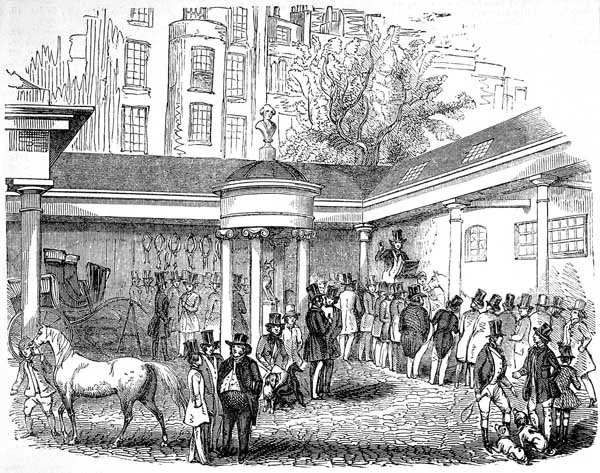Grenfell - New South Wales
On the 10 January 2022 I decided to do a little road trip out west starting in Bathurst my first stop was Grenfell making my way over to Forbes then across to Eugowra and Orange then back home to Bathurst.
Grenfell is situated in the Weddin Shire in the Central West of New South Wales surrounded by canola fields, cattle and sheep farms. Grenfell is roughly a 4½ hours drive from Sydney and just under two hours drive from Bathurst. Grenfell is steeped in history with much of its old world character maintained, poetry, heritage landscapes, nature walks, gold and bushrangers.
Visitor Centre at 88 Main Street, Grenfell NSW.
Taken on 11/1/2022 by Nadine Travels West.
Grenfell Visitor Centre
So my first stop in Grenfell was the Visitor Centre to pick up a map and find out some info on the town. The lady who helped me was so kind and polite, she gave me some tips on places to photograph. I picked up the attraction guide, unearthGrenfell’s streetscape booklet and the visitor guide booklet. Click here for a link to a PDF copy on the Grenfell Tourism website.
Beside the visitor centre are very clean toilets available for the public. I do believe they have opening hours similar to the visitor centre.
Loch waited outside the Grenfell Visitor Centre while I went and got a map of sights to see.
Why does Grenfell have two main streets?
Grenfell’s first main street was George Street, one block north of Main Street.
When local shepherd Cornelius O’Brien found gold on O’Brien’s Hill, a settlement sprung up along the Emu Creek. Within weeks there were up to 10,000 people living there. Some, who arrived with the gold rush of 1866 set up businesses by erecting tents and shacks in two rough lines along the southern banks of the Emu Creek.
By the time government surveyors arrived several weeks later, they determined it was not possible to alter narrow George Street to be a suitable business district for an anticipated thriving town. Instead they surveyed Main Street, thinking ahead that the growing town needed a wider and straighter street for its commercial centre and the horse drawn vehicles.
The new settlement name was changed and proclaimed as Grenfell on the 1st January 1867. By the 1880’s business owners began to relocate from their original buildings in George Street to new premises along Main Street.
Many of Grenfell’s heritage buildings can still be found in Main Street and George Street. As you wander these two gently curving historic thoroughfares, be sure to see the Oddfellows Hall (1888) with its beautiful façade, the archway in the Tattersalls Turf Hotel (1888) used by horse-drawn coaches, the Bank of NSW (1890), the old Salvation Army Citadel (1883) and The Railway Hotel (1879) and stables.
Main Street, Grenfell
George Street, Grenfell
Grenfell Railway Station
It was the transport of agriculture commodities that brought the rail to Grenfell. The Railway Station was a hub of the town employing many people in manual roles particularly at harvest and shearing time, when bags of wheat or bales of wool were being transported.
The Historic Grenfell Railway Station has been restored by the Lions Club of Grenfell. It is now a beautiful place to make a rest stop or have a picnic as there is also a children’s playground, bbq area and toilets.
Henry Lawson
Grenfell is the birthplace of Henry Lawson, one of Australia’s most famous poet and short story writers. The town of Grenfell celebrates his life every June long weekend by hosting the Henry Lawson Festival of Arts, which attracts artists, writers, poets and singers. There are a couple of Henry Lawson statues and memorials situated around Grenfell. I will list below the ones that I visited.
Henry Lawson on the Bench poised with a pen and notepad in his hand. This statue is located on the corner of Main and Forbes Street.
Henry Lawson bust located on Main Street. Push a button and hear his poems.
The Henry Lawson birthplace monument located on Lawson Drive next to Lawson Oval.
Henry Lawson bust located on Main Street, Grenfell.
Some of Nadine Travels West favourite buildings and stories.
Bristol Arms Hotel
This brick victorian italianate style building with a detached wrap-around posted verandah is recorded running as a public house in 1877 by Licensee William Rich.
William Rich and his brothers made their fortune on the goldfields. William died in 1879 from a mining accident so the Licensee was transferred to Williams widow Ellen Rich. In 1881 the hotel was transferred to Alfred Rich Williams brother.
Tattersalls Turf Hotel
The year the Emu Creek Golf Rush started in 1866 a Tattersalls Turf Hotel was built on this site. Baron Cohen was the first licensee in 1867.
The hotel was destroyed by ‘The Great Fire’ on Christmas Day 1888. The Great Fire destroyed 30 buildings, a large number of shops, houses, hotels and stables in George Street .
The new two storey brick hotel was built in 1899 in a Victorian Filigree style with a wide, full length, two storey, posted verandah. In 1933 the hotel was de-licensed and turned into a boarding house.
‘Tattersalls’ was a popular name in the 19th Century. It was derived from the London Tattersalls Horse Markets, which laid down betting rules and thus became the rendezvous location for this activity. It also refers to the checked cloth designs of horse blankets.
Tattersall's at Hyde Park Corner in 1842. Image from Wikipedia.
Today Tattersalls is the leading bloodstock auctioneer in Europe, selling 10,000 horses a year. The horses are still priced in guineas in accordance with horse-racing tradition.
As always please leave a comment below if I have any information incorrect so I can amend it, key factors I have missed that I should add to this blog post or a town you think I should visit next.
Nadine Travels West


































































